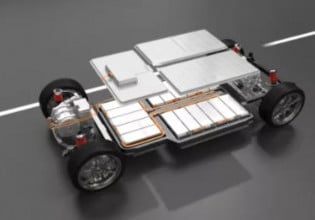Massachusetts Institute of Technology (MIT) scientists have harnessed the construction talents of tiny viruses to build ultra-small "nanowire" structures for use in very thin lithium-ion batteries. By manipulating a few genes inside these viruses, the team was able to coax the organisms to grow and self-assemble into a functional electronic device.
The goal of the work, led by MIT Professors Angela Belcher, Paula Hammond and Yet-Ming Chiang, is to create batteries that cram as much electrical energy into as small or lightweight a package as possible. The batteries they hope to build could range from the size of a grain of rice up to the size of existing hearing aid batteries.
In the current work, the MIT team used an intricate assembly process to create the anode. Specifically, they manipulated the genes in a laboratory strain of a common virus, making the microbes collect exotic materials -- cobalt oxide and gold. And because these viruses are negatively charged, they can be layered between oppositely charged polymers to form thin, flexible sheets.
A report on the work will appear in the April 7 issue of Science. Belcher, the Germeshausen Professor of Materials Science and Engineering and Biological Engineering; Chiang, the Kyocera Professor of Materials Science and Engineering (MSE); and Hammond, the Mark A. Hyman Professor of Chemical Engineering (ChE), led a team of five additional researchers.
In their research, the MIT team altered the virus's genes so they make protein coats that collect molecules of cobalt oxide, plus gold. The viruses then align themselves on the polymer surface to form ultrathin wires. Each virus, and thus the wire, is only 6 nanometers (6 billionths of a meter) in diameter, and 880 nanometers in length.
"We can make them in larger diameters," Belcher said, "but they are all 880 nanometers in length," which matches the length of the individual virus particles. And, "once we've altered the genes of the virus to grow the electrode material, we can easily clone millions of identical copies of the virus to use in assembling our batteries.
"For the metal oxide we chose cobalt oxide because it has very good specific capacity, which will produce batteries with high energy density," meaning it can store two or three times more energy for its size and weight compared to previously used battery electrode materials. And adding the gold further increased the wires' energy density, she added.
Equally important, the reactions needed to create nanowires occur at normal room temperatures and pressures, so there is no need for expensive pressure-cooking technology to get the job done.






